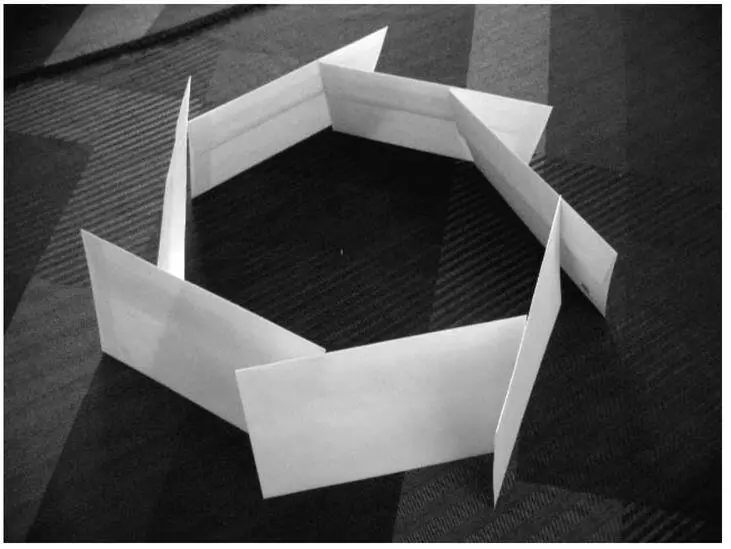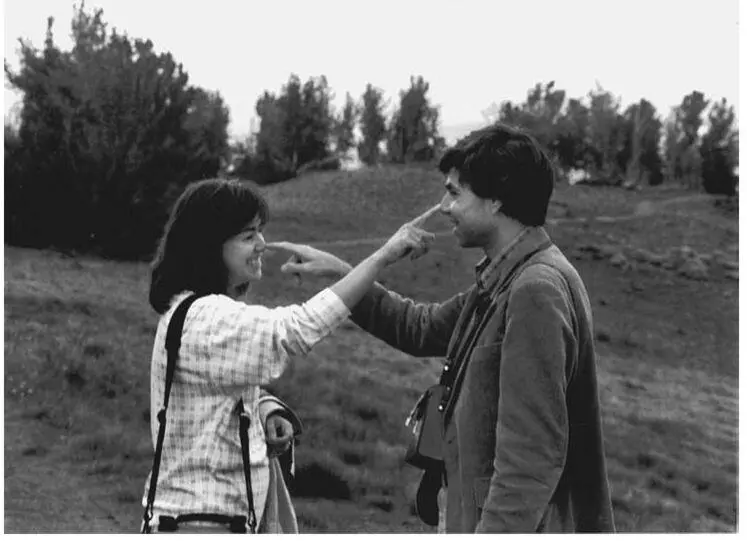Douglas Hofstadter - I Am a Strange Loop
Здесь есть возможность читать онлайн «Douglas Hofstadter - I Am a Strange Loop» весь текст электронной книги совершенно бесплатно (целиком полную версию без сокращений). В некоторых случаях можно слушать аудио, скачать через торрент в формате fb2 и присутствует краткое содержание. Жанр: Прочая документальная литература, на английском языке. Описание произведения, (предисловие) а так же отзывы посетителей доступны на портале библиотеки ЛибКат.
- Название:I Am a Strange Loop
- Автор:
- Жанр:
- Год:неизвестен
- ISBN:нет данных
- Рейтинг книги:4 / 5. Голосов: 1
-
Избранное:Добавить в избранное
- Отзывы:
-
Ваша оценка:
- 80
- 1
- 2
- 3
- 4
- 5
I Am a Strange Loop: краткое содержание, описание и аннотация
Предлагаем к чтению аннотацию, описание, краткое содержание или предисловие (зависит от того, что написал сам автор книги «I Am a Strange Loop»). Если вы не нашли необходимую информацию о книге — напишите в комментариях, мы постараемся отыскать её.
I Am a Strange Loop — читать онлайн бесплатно полную книгу (весь текст) целиком
Ниже представлен текст книги, разбитый по страницам. Система сохранения места последней прочитанной страницы, позволяет с удобством читать онлайн бесплатно книгу «I Am a Strange Loop», без необходимости каждый раз заново искать на чём Вы остановились. Поставьте закладку, и сможете в любой момент перейти на страницу, на которой закончили чтение.
Интервал:
Закладка:
That shared goal of bringing up our children safely, happily, and wisely in this huge, crazy, and often scary world became the dominant motif of our marriage, and it forged us both in the same mold. Although we were distinct individuals, that distinctness seemed to fade away, to vanish almost entirely, when it came to parenthood. First in that arena of life, and then slowly in other arenas, we were one individual with two bodies, one sole “pairson”, one “indivisible dividual”, one single “dual”. We two were Twe. We had exactly the same feelings and reactions, we had exactly the same dreads and dreams, exactly the same hopes and fears. Those hopes and dreams were not mine or Carol’s separately, copied twice — they were one set of hopes and dreams, they were our hopes and dreams.
I don’t mean to sound mystical, as if to suggest that our common hopes floated in some ethereal neverland independent of our brains. That’s not my view at all. Of course our hopes were physically instantiated two times, once in each of our separate brains — but when seen at a sufficiently abstract level, these hopes were one and the same pattern, merely realized in two distinct physical media.
No one has trouble with the idea that “the same gene” can exist in two different cells, in two different organisms. But what is a gene? A gene is not an actual physical object, because if it were, it could only be located in one cell, in one organism. No, a gene is a pattern — a particular sequence of nucleotides (usually encoded on paper by a sequence of letters from the four-letter alphabet “ACGT”). And so a gene is an abstraction, and thus “the very same gene” can exist in different cells, different organisms, even organisms living millions of years apart.
No one has trouble with the idea that “the same novel” can exist in two different languages, in two different cultures. But what is a novel? A novel is not a specific sequence of words, because if it were, it could only be written in one language, in one culture. No, a novel is a pattern — a particular collection of characters, events, moods, tones, jokes, allusions, and much more. And so a novel is an abstraction, and thus “the very same novel” can exist in different languages, different cultures, even cultures thriving hundreds of years apart.
And so no one should have trouble with the idea that “the same hopes and dreams” can inhabit two different people’s brains, especially when those two people live together for years and have, as a couple, engendered new entities on which these hopes and dreams are all centered. Perhaps this seems overly romantic, but it is how I felt at the time, and it is how I still feel. The sharing of so much, particularly concerning our two children, aligned our souls in some intangible yet visceral manner, and in some dimensions of life turned us into a single unit that acted as a whole, much as a school of fish acts as a single-minded higher-level entity.



CHAPTER 16
Grappling with the Deepest Mystery

A Random Event Changes Everything
IN THE month of December, 1993, when we were just a quarter of the way into my sabbatical year in Trento, Italy, my wife Carol died very suddenly, essentially without warning, of a brain tumor. She was not yet 43, and our children, Danny and Monica, were but five and two. I was shattered in a way I could never have possibly imagined before our marriage. There had been a bright shining soul behind those eyes, and that soul had been suddenly eclipsed. The light had gone out.
What hit me by far the hardest was not my own personal loss (“Oh, what shall I do now? Who will I turn to in moments of need? Who will I cuddle up beside at night?”) — it was Carol’s personal loss. Of course I missed her, I missed her enormously — but what troubled me much more was that I could not get over what she had lost: the chance to watch her children grow up, see their personalities develop, savor their talents, comfort them in their sad times, read them bedtime stories, sing them songs, smile at their childish jokes, paint their rooms, pencil in their heights on their closet walls, teach them to ride a bike, travel with them to other lands, expose them to other languages, get them a pet dog, meet their friends, take them skiing and skating, watch old videos together in our playroom, and on and on. All this future, once so easily taken for granted, Carol had lost in a flash, and I couldn’t deal with it.
There was a time, many months later, back in the United States, when I tried out therapy sessions for recently bereaved spouses — “Healing Hearts”, I think they were called — and I saw that most of the people whose mates had died were focused on their own pain, on their own loss, on what they themselves were going to do now. That, of course, was the meaning of the sessions’ name — you were supposed to heal, to get better. But how was Carol going to heal?
I truly felt as if the other people in these sessions and I were talking past each other. We didn’t have similar concerns at all! I was the only one whose mate had died when the children were tiny, and this fact seemed to make all the difference. Everything had been ripped away from Carol, and I could not stand thinking about — but I could not stop thinking about — what she’d been cheated out of. This bitter injustice to Carol was the overwhelming feeling I felt, and my friends kept on saying to me (oddly enough, in a well-meaning attempt to comfort me), “You can’t feel sorry for her! She’s dead! There’s no one to feel sorry for any more!” How utterly, totally wrong this felt to me.
One day, as I gazed at a photograph of Carol taken a couple of months before her death, I looked at her face and I looked so deeply that I felt I was behind her eyes, and all at once, I found myself saying, as tears flowed, “That’s me! That’s me!” And those simple words brought back many thoughts that I had had before, about the fusion of our souls into one higher-level entity, about the fact that at the core of both our souls lay our identical hopes and dreams for our children, about the notion that those hopes were not separate or distinct hopes but were just one hope, one clear thing that defined us both, that welded us together into a unit, the kind of unit I had but dimly imagined before being married and having children. I realized then that although Carol had died, that core piece of her had not died at all, but that it lived on very determinedly in my brain.
Desperate Lark
In the surreal months following the tragedy of Carol’s sudden death, I found myself ceaselessly haunted by the mystery of the vanishing of her consciousness, which made no sense at all to me, and by the undeniable fact that I kept on thinking of her in the present, which also confused me. Trying to put these extremely murky things down on paper but quite unsure of myself, I initiated in late March of 1994 an email exchange with my close friend and colleague Daniel Dennett across the ocean in Massachusetts, for Dan’s ideas on minds and the concept of “I” had always seemed to me to be very nearly on the same wavelength as my own (which perhaps explains why we got along so well together when, in 1981, we coedited a book entitled The Mind’s I ). Dan also had spent most of his professional life thinking about and writing about these kinds of problems, so he wasn’t exactly a randomly selected partner!
Читать дальшеИнтервал:
Закладка:
Похожие книги на «I Am a Strange Loop»
Представляем Вашему вниманию похожие книги на «I Am a Strange Loop» списком для выбора. Мы отобрали схожую по названию и смыслу литературу в надежде предоставить читателям больше вариантов отыскать новые, интересные, ещё непрочитанные произведения.
Обсуждение, отзывы о книге «I Am a Strange Loop» и просто собственные мнения читателей. Оставьте ваши комментарии, напишите, что Вы думаете о произведении, его смысле или главных героях. Укажите что конкретно понравилось, а что нет, и почему Вы так считаете.












